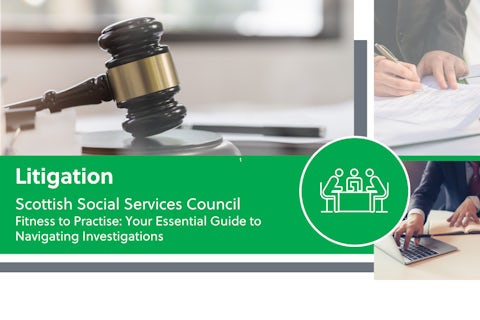In May 2018, we wrote a blog about the Prescription (Scotland) Bill which had been introduced to the Scottish Parliament. Its purpose was to amend the law on negative prescription: the extinguishing of rights and obligations after a particular period of time. That Bill has now been passed by the Scottish Parliament.
The theory of negative prescription is that there must be some certainty as to parties’ positions, and extinguishing rights/obligations provides certainty and discourages delay. The legal basis for negative prescription in Scotland is found in the Prescription and Limitation (Scotland) Act 1973, and can be summarised (in the main) as follows: some obligations prescribe after five years; most obligations prescribe after twenty years; and some obligations never prescribe.
One of the main issues is therefore when the relevant time period (five or twenty years) begins to run. The difficulty in assessing this remains a thorny issue, as is apparent from the recent judgment issued in Kennedy v Royal Bank of Scotland.
To recap, the Bill was introduced following the Scottish Law Commission report in 2017. That report followed the decision of the Supreme Court in Morrison v ICL Plastics, in which decades of practice was effectively labelled as misinterpretation and the correct legal test ‘clarified’. The Supreme Court’s decision resulted in a harsh interpretation and has led to the speedily progression of this Bill.
The Bill is therefore focussed on addressing practical issues rather than effecting wholesale change.
Main changes
The focus in the latter stages of the Bill’s progression through the Scottish Parliament was how it would affect statutory obligations to pay money, in particular council tax and social security benefits.
However, the biggest change is undoubtedly the new test for the commencement of the negative five-year prescriptive period. The period will commence when a person knows (or should know):
- that loss, injury or damage has occurred;
- that the loss, injury or damage was caused by a person‘s act or omission; and
- the identity of that person.
In relation to twenty-year negative prescription, the Bill provides that this can no longer be interrupted (and therefore restarted). However that does not prevent it being extended in some circumstances, such as where a court action has been commenced but not concluded.
In the case of obligations to pay damages, in addition to not being interrupted, twenty-year negative prescription will run from an earlier date. Rather than commencing on the date of loss or damage, the period will commence on the date of the last relevant act or omission.
The Bill also allows for standstill agreements, which in certain circumstances allows parties to agree to extend the five-year prescription period for one additional year. Only one extension will be allowed to this period. The purpose of this provision is to prevent unnecessary court actions raised solely to protect from the effects of time-bar. To do so is a costly exercise, particularly if parties are already negotiating.
Potential problem areas
Whilst clarity in this complex area is to be welcomed, there are a number of issues which may arise in due course. These, along with others, will inevitably be the subject of case law in the coming years.
Firstly, the idea of “loss” becomes complex when considering the state of awareness. This most frequently arises in terms of expenditure on professional costs, and whether that in itself amounts to awareness of a “loss”.
Secondly, the need to have awareness of identity can become complicated when dealing with complex arrangements or a group of companies.
These and other issues are unsurprising as the law moves away from heavy reliance on objectivity. As the Inner House has recently stated in Kennedy, the present law disregards knowledge: “it is the objective existence of the loss that matters, not the creditor’s knowledge of that loss”.
Implementation
The issue of negative prescription in practice is not settled by the Bill being passed. Once the Bill has received Royal Assent, there will be further regulations to follow which will deal with the transition from practice post-ICL to the system under the Bill. This will be an important issue for actions both pre-litigation and already progressing through Court.
There does unsurprisingly remain a number of cases where the new provisions will – like the post-ICL position – result in a harsh outcome for those seeking to enforce rights and obligations. This is a necessary evil as the law seeks to draw a line somewhere.
Whilst the Bill can be seen to loosen the restrictive approach to prescription, the issues thrown up by the passage of time in enforcing rights and obligations remain complex. Whilst not always possible, these can often be avoided by investigating and, if in any doubt, getting advice early.
The information and opinions contained in this blog are for information only. They are not intended to constitute advice and should not be relied upon or considered as a replacement for advice. Before acting on any of the information contained in this blog, please seek specific advice from Gilson Gray.








